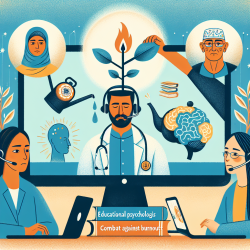Introduction: The Power of Community-Based Programs
In the realm of health promotion, particularly in speech-language pathology, the integration of community-based participatory research (CBPR) and implementation science can lead to significant improvements in health outcomes. The research article, "Implementation and dissemination of the Sikh American Families Oral Health Promotion Program," provides a compelling case study of how these methodologies can be applied to enhance oral health among underserved communities.
Key Findings from the Sikh American Families Oral Health Promotion Program
The Sikh American Families Oral Health Promotion Program utilized a community-based participatory approach to develop a culturally tailored curriculum aimed at improving oral health in the Sikh-South Asian community. The program's success was evident in several key outcomes:
- Improved oral hygiene behaviors and self-efficacy among participants.
- 81% of participants without prior dental insurance obtained it through the program.
- 92.6% of participants without a dentist found a local provider thanks to the program.
These results underscore the importance of culturally tailored interventions and the role of community engagement in achieving health equity.
How Practitioners Can Implement These Findings
For practitioners looking to improve their skills and outcomes, the findings from this program offer several actionable insights:
- Adopt a Community-Based Approach: Engage with local communities to understand their specific needs and barriers to care. This approach ensures that interventions are relevant and effective.
- Utilize the Consolidated Framework for Implementation Research (CFIR): This framework can guide the development and evaluation of health programs, ensuring they are well-structured and impactful.
- Focus on Cultural Relevance: Tailor health promotion materials and activities to the cultural context of the target population. This increases engagement and the likelihood of behavior change.
Encouraging Further Research
While the Sikh American Families Oral Health Promotion Program demonstrates the potential of community-based interventions, further research is needed to explore the scalability and adaptability of such programs across different communities and health issues. Practitioners are encouraged to collaborate with researchers and community leaders to design and implement studies that build on these findings.
Conclusion
The integration of community engagement and implementation science in health promotion programs offers a promising pathway to improving health outcomes and achieving health equity. By adopting these approaches, practitioners can enhance their practice and contribute to the well-being of underserved populations.
To read the original research paper, please follow this link: Implementation and dissemination of the Sikh American Families Oral Health Promotion Program.










